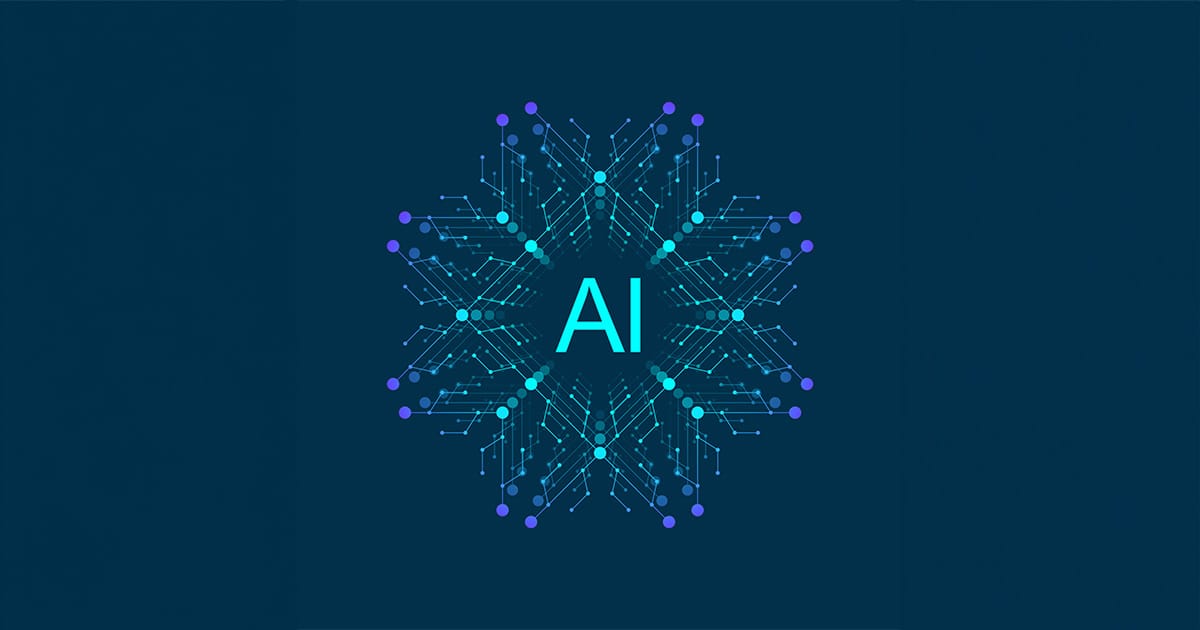Introduction
Building on our previous exploration of the fundamentals of data engineering within the lifecycle of Large Language Models (LLMs), this article dives deep into actionable strategies to optimize data pipelines, enhance data quality, and secure model deployments. In Part 1, we break down six core data engineering techniques—from initial data collection to robust security measures—with comprehensive implementation guidelines, parameter tuning tips, and an analysis of their trade-offs. In Part 2, we will advance into sophisticated strategies such as dynamic pipeline scaling, automated data governance, and bias mitigation frameworks. Get ready to elevate your data engineering expertise for LLMs!
Key Terminology
- Data Pipeline: A series of automated processes that ingest, transform, and store data from raw sources to model training environments.
- Data Cleaning: Techniques used to remove errors, inconsistencies, and irrelevant information from raw datasets to ensure high quality.
- Feature Engineering: The process of extracting or creating meaningful attributes from raw data that improve model performance.
- Scalability: The ability of an infrastructure to handle increased volumes of data or processing load without compromising performance.
- Latency: The delay between data input and processing output, crucial for real-time applications and high-availability systems.
- Throughput: The rate at which data is processed and moved through pipelines—key for evaluating system performance under heavy loads.
- Encryption & Anonymization: Security measures to protect data integrity and privacy during storage and transmission.
1. Data Collection & Preparation: Laying the Groundwork
What It Solves:
High-quality LLM performance starts with impeccable data. Data collection and preparation ensure that the input datasets are accurate, consistent, and free from bias, which is critical for downstream model training.
Mechanics:
- Sourcing Data:
Collaborate with domain experts and leverage multiple sources such as public datasets, licensed corpora, web crawls, research papers, and even synthetically generated data. The goal is to capture a diverse and representative sample of real-world scenarios.
- Data Cleaning:
Apply techniques such as parsing to extract relevant text, normalization (e.g., converting all text to lowercase, removing punctuation), and tokenization (splitting text into words or subwords).
- Data Transformation:
Convert raw data into formats amenable to machine learning by creating structured formats, encoding categorical values, or converting text into numerical representations using methods like word embeddings or one-hot encoding.
- Data Validation:
Implement rigorous quality checks, including automated error detection and statistical analyses, to ensure data integrity. Validate data at every stage to prevent the propagation of errors.
Example Scenario:
Imagine an application for sentiment analysis on social media data. Raw tweets may include hashtags, emojis, URLs, and slang. Data engineers first gather this raw data from APIs, then clean it by removing irrelevant symbols, normalize the text, and finally tokenize the sentences so that the LLM can effectively learn sentiment patterns.
Parameters:
- Batch Size: Determines how many records to process at once during cleaning.
- Normalization Settings: Specific transformations such as converting text to lowercase or stripping special characters.
- Tokenization Granularity: Choosing between word-level or subword-level tokenization, depending on the language and domain requirements.
Trade-offs:
✅ Improved Data Quality: Leads to more accurate and reliable LLM outputs, as the model learns from consistent, well-processed data.
❌ Increased Processing Time: Detailed cleaning and transformation can add latency and require significant computational resources, especially with very large datasets.
Best Practice:
Automate the data quality checks using continuous integration tools and establish a robust logging system to monitor data anomalies in real-time. This ensures that any issues are caught early and do not affect model training.
2. Building Data Pipelines: Streamlining Data Flow
What It Solves:
Efficient data pipelines are essential to manage the ingestion, processing, and storage of vast amounts of data necessary for training LLMs without causing bottlenecks.
Mechanics:
- Automation & Scheduling:
Set up automated pipelines using tools like Apache Spark, Apache Kafka, or
cloud-native services (e.g., AWS Data Pipeline, Google Cloud Dataflow) to schedule regular data ingestion and processing.
- Parallel Processing:
Implement parallelism and distributed computing techniques to handle large volumes of data concurrently. This minimizes the processing time and ensures that data is readily available for training.
- Error Handling & Logging:
Integrate robust error detection and logging mechanisms to monitor pipeline health, allowing for quick identification and resolution of issues.
Example Scenario:
Consider a global e-commerce company that collects real-time user reviews. A scalable data pipeline automates the ingestion of review data, cleans and transforms it in parallel across multiple nodes, and stores the processed data in a cloud-based data warehouse. This setup ensures that the LLM is continuously updated with fresh, high-quality data.
Parameters:
- Parallelism Settings: Number of parallel threads or nodes used during processing.
- Batch Interval: The time interval for processing data batches.
- Resource Allocation: CPU/GPU and memory settings tailored to the processing requirements.
Trade-offs:
✅ Enhanced Efficiency: Leads to high throughput and lower latency in data processing, critical for real-time applications.
❌ Infrastructure Complexity: Requires a higher level of expertise to set up, manage, and troubleshoot distributed systems, potentially increasing operational costs.
Best Practice:
Adopt modular pipeline designs that allow independent scaling of components. Regularly monitor pipeline performance using dashboards and set up automated alerts to ensure timely intervention when bottlenecks occur.
3. Feature Engineering: Extracting Value from Data
What It Solves:
Enhances the LLM’s performance by extracting or creating features that capture the underlying patterns and nuances in the data, ultimately leading to more accurate predictions.
Mechanics:
- Collaborative Feature Extraction:
Work in tandem with data scientists to identify key attributes that improve model performance. This may include sentiment scores, keyword frequencies, or syntactic structures.
- Automated Feature Generation:
Employ techniques like principal component analysis (PCA), clustering, or deep feature synthesis to generate additional features that the model might not identify on its own.
- Feature Transformation:
Standardize and scale features to ensure they are within a comparable range, which is crucial for many machine learning algorithms.
Example Scenario:
For a financial forecasting model, engineered features might include moving averages, volatility indices, and trading volume patterns. These features, derived from raw market data, provide the LLM with nuanced insights into market trends and risk factors.
Parameters:
- Feature Selection Thresholds: Criteria for selecting or discarding features based on importance metrics.
- Dimensionality Reduction: Number of principal components to retain during PCA.
- Normalization Parameters: Methods (e.g., min-max scaling, z-score normalization) applied to standardize feature values.
Trade-offs:
✅ Improved Model Accuracy: Richer, more informative features lead to better predictive performance and understanding.
❌ Increased Computational Demand: Additional processing time and memory are required, which can slow down training if not managed properly.
Best Practice:
Maintain detailed documentation of the feature engineering process, including versioning of feature sets. This helps in replicating results, debugging issues, and streamlining future enhancements.
4. Scalability & Efficiency: Powering High-Volume Data Processing
What It Solves:
Addresses the challenges of managing and processing ever-increasing volumes of data while maintaining high performance and low latency.
Mechanics:
- Distributed Computing:
Utilize cloud storage (AWS S3, Google Cloud Storage, Azure Blob Storage) and distributed processing frameworks (Apache Spark, Dask) to process data in parallel.
- Optimized Data Storage:
Implement efficient storage formats (e.g., Parquet, ORC) and indexing strategies to accelerate data retrieval and minimize latency.
- Auto-scaling & Load Balancing:
Leverage cloud-based auto-scaling features to dynamically allocate resources based on demand, ensuring consistent performance even during peak loads.
Example Scenario:
A healthcare analytics platform processing terabytes of patient records uses distributed computing to handle high volumes of data. Auto-scaling ensures that during peak hospital admission times, the system can process and analyze data quickly, delivering timely insights to medical professionals.
Parameters:
- Node Configuration: Number and type of compute instances or clusters to deploy.
- Cache Settings: Parameters that control the size and duration of in-memory data storage for quick access.
- Partitioning Strategy: How data is split across storage nodes to maximize parallel processing.
Trade-offs:
✅ Robust Performance: Supports high throughput and reduces processing times, critical for real-time analytics.
❌ Cost Considerations: Scaling infrastructure dynamically can lead to increased operational expenses if not properly managed.
Best Practice:
Implement cost-monitoring and performance-tracking tools to optimize resource usage. Periodically review and adjust the scaling policies based on real usage patterns to balance performance with cost efficiency.
5. Model Deployment & Monitoring: Bridging Development and Production
What It Solves:
Ensures that LLMs are deployed in a stable, secure, and efficient manner, with continuous monitoring to maintain high performance and reliability in production environments.
Mechanics:
- Deployment Strategies:
Choose the appropriate deployment architecture (cloud-based, on-premise, or hybrid) based on requirements such as latency, scalability, and budget. Techniques like blue-green deployment or canary releases are used to minimize downtime and risks during updates.
- Continuous Monitoring:
Implement systems to track key performance metrics—such as latency, throughput, error rates, and resource utilization—using tools like Prometheus, Grafana, or cloud-native monitoring services.
- Automated Rollback & Updates:
Set up mechanisms to automatically revert to previous versions in case of deployment failures, ensuring uninterrupted service.
Example Scenario:
A customer service chatbot deployed on a cloud platform is continuously monitored for response time and error rates. When a spike in latency is detected, the system automatically scales up resources or triggers a rollback to a stable version, ensuring that users experience minimal disruption.
Parameters:
- KPI Thresholds: Define acceptable ranges for latency, error rate, and throughput.
- Monitoring Frequency: How often the system checks and logs performance metrics.
- Alert Configuration: Criteria and channels for triggering notifications in case of anomalies.
Trade-offs:
✅ Enhanced Reliability: Proactive monitoring and automated recovery significantly improve system stability and user satisfaction.
❌ Operational Complexity: Requires additional infrastructure and expertise to set up and maintain monitoring systems, potentially increasing the overall system complexity.
Best Practice:
Adopt a layered monitoring approach that includes real-time alerts, periodic health checks, and detailed logging. This multi-tiered strategy helps in quickly diagnosing issues and maintaining optimal system performance.
6. Data Security & Privacy: Safeguarding Sensitive Information
What It Solves:
Protects sensitive data from breaches and unauthorized access while ensuring compliance with regulatory standards such as GDPR, CCPA, and HIPAA.
Mechanics:
- Access Control:
Implement robust access controls using Role-Based Access Control (RBAC) and Attribute-Based Access Control (ABAC) to restrict data access to authorized personnel only.
- Encryption & Anonymization:
Encrypt data both in transit and at rest using industry-standard protocols (e.g., TLS, AES). Apply anonymization techniques such as tokenization, masking, or differential privacy to protect personally identifiable information (PII).
- Regular Auditing & Compliance Checks:
Conduct routine audits and vulnerability assessments to ensure that data handling practices adhere to regulatory standards and internal policies.
Example Scenario:
A financial institution processing sensitive customer data uses advanced encryption for data storage and transmission. Access is strictly controlled via RBAC, and periodic audits ensure that all data processing activities comply with GDPR guidelines.
Parameters:
- Encryption Protocols: Specify which algorithms and key lengths are used (e.g., AES-256).
- Anonymization Settings: Define the level of data masking or noise addition required to preserve privacy without losing data utility.
- Audit Frequency: Set the interval for internal and external compliance checks.
Trade-offs:
✅ Enhanced Trust & Compliance: Robust security measures protect data integrity and foster trust with customers and regulators.
❌ Performance Overhead: Encryption, anonymization, and continuous auditing may introduce processing delays and increase system complexity.
Best Practice:
Regularly update security protocols and conduct penetration testing to stay ahead of potential threats. Integrate automated compliance monitoring tools to ensure that security measures evolve alongside new regulatory requirements.
Part 2 Preview: Advanced Techniques
In Part 2, we will explore advanced data engineering strategies that build on these foundational techniques, including:
- Dynamic Pipeline Scaling:
Learn how to implement systems that automatically adjust resource allocation in response to real-time data loads.
- Automated Data Governance:
Discover machine learning-driven methods for continuous auditing, compliance checks, and ensuring data lineage.
- Bias Mitigation Frameworks:
Advanced techniques to detect and correct biases within large datasets to improve fairness and accuracy.
- Integrated Monitoring & Self-Healing Systems:
Combining real-time analytics with automated recovery mechanisms for uninterrupted service.
- Hybrid Deployment Models:
Explore best practices for combining cloud and on-premise solutions to optimize performance and cost.
Get ready to supercharge your data engineering skills and build robust, future-proof infrastructures for LLMs!




